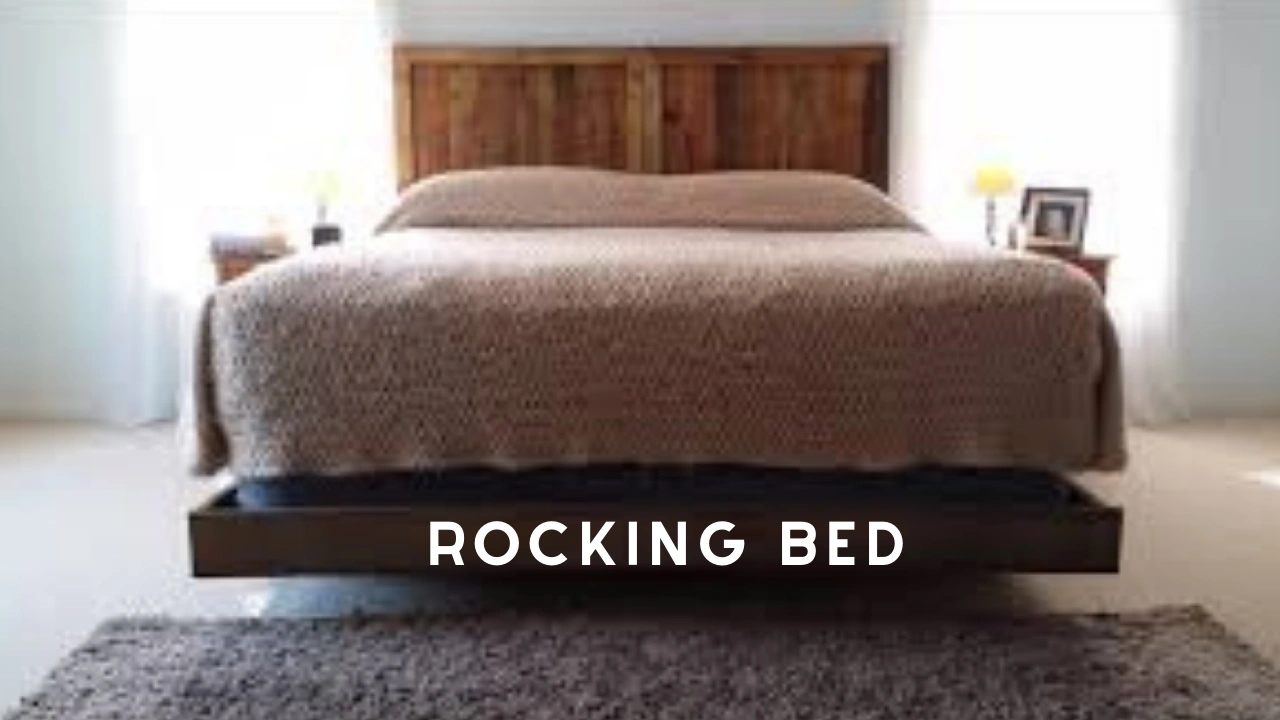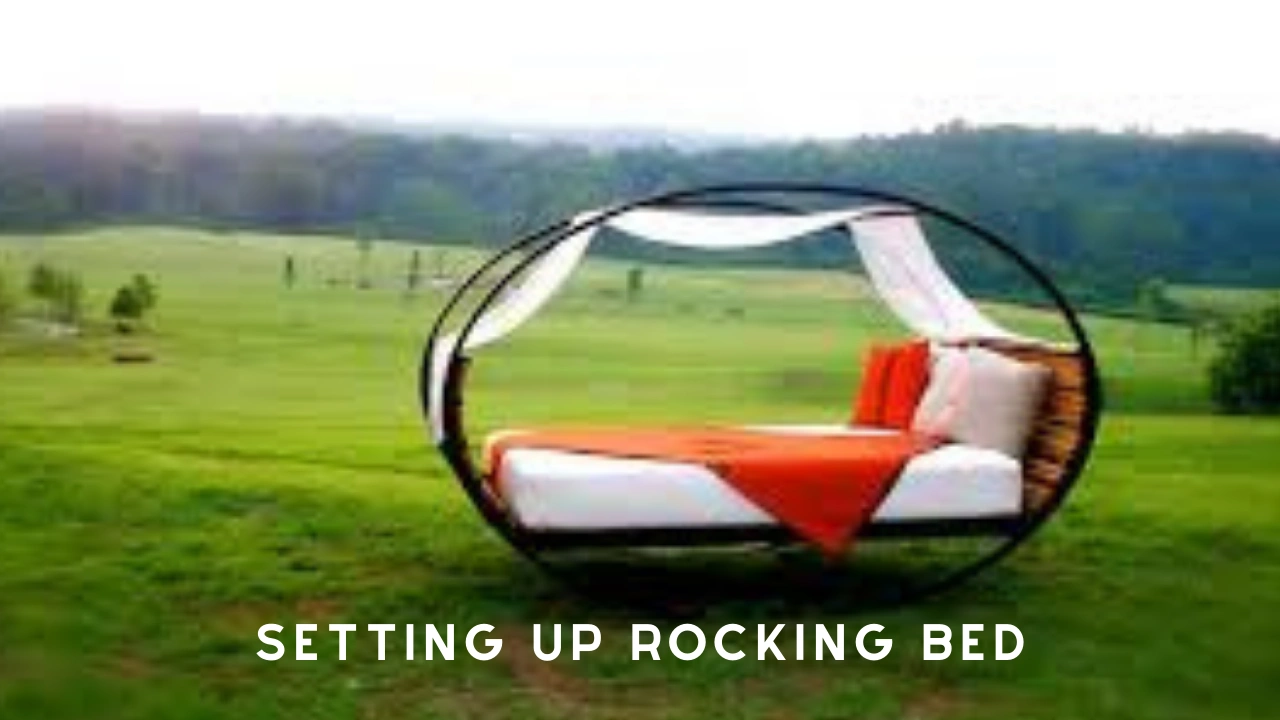Rocking Bed: Reduces Stress and Improve Sleep Naturally

A Rocking Bed is a modern sleep innovation designed to bring the calming effects of gentle motion into your bedroom, much like the cozy familiarity of a Captains Bed in a well-designed space. Its slow, rhythmic sway mimics the soothing experience of being rocked as a child, helping the body relax faster. For many, this motion transforms restless nights into deep, restorative sleep.
The idea of rocking for comfort is not new — it has been used in cradles, hammocks, and chairs for centuries. Now, advanced designs bring that same comfort to adult beds with quiet, controlled movement. This combination of tradition and technology makes the Rocking Bed a unique solution for better sleep quality.
What is Rocking Bed?
A Rocking Bed is essentially a bed frame designed to move rhythmically while you lie on it. This motion can be created through manual mechanisms or quiet, automated motors. The rocking is slow and measured, ensuring you feel secure and supported. Most models are built to fit your existing mattress, making them an easy upgrade without replacing your entire bed.
Manufacturers design these beds to achieve a specific rocking speed, often around 0.25 Hz — one full sway every four seconds. This rate is considered optimal for synchronizing with your brain’s natural rhythms, promoting quicker sleep onset and deeper rest.
Why Rocking Works?
Rocking works because it gently stimulates the vestibular system in your inner ear, which helps regulate balance and relaxation. This rhythmic motion sends signals to your brain that promote calmness and prepare the body for sleep. Over time, your brain associates the motion with rest, making it easier to drift off quickly.
Studies show that rocking can synchronize brain waves with the motion, increasing slow-wave and REM sleep stages. These stages are the most restorative, helping with memory consolidation, stress reduction, and physical recovery. The gentle sway of a Rocking Bed essentially acts as a natural lullaby for your entire nervous system.
Health Benefits of a Rocking Bed
The Rocking Bed is more than just a novelty; it provides tangible health benefits.
| Benefit | Why It Matters |
|---|---|
| Faster Sleep Onset | Helps those with insomnia fall asleep more quickly |
| Deeper Sleep Quality | Increases time spent in slow-wave and REM sleep |
| Fewer Night Awakenings | Encourages continuous sleep without interruptions |
| Stress Reduction | Gentle motion lowers cortisol levels |
| Memory Improvement | Supports brain processes that store and organize information |
| Better Circulation | Rhythmic movement promotes healthy blood flow |
Each of these benefits works together to improve both physical and mental well-being. People who sleep on a Rocking Bed often report feeling more refreshed and alert during the day.
How the Rocking Bed Works?
Most Rocking Beds have a base frame that moves while holding your mattress securely. The mechanism can be powered by:
- Manual Motion — a simple pivot or cradle frame that moves when you shift weight.
- Motorized Systems — quiet electric motors that provide consistent, adjustable rocking.
Some designs allow you to set the speed, duration, and even rocking style (side-to-side or head-to-toe). Safety features, such as locking mechanisms and motion limits, ensure that the bed is safe for all ages.
Who Should Consider a Rocking Bed?
A Rocking Bed can benefit many types of sleepers:
- People with insomnia or difficulty falling asleep
- Individuals who wake frequently during the night
- Older adults seeking non-medication sleep solutions
- Those dealing with stress or anxiety that impacts rest
- Anyone simply wanting deeper, more restorative sleep
Even people who don’t struggle with sleep disorders may enjoy the calming effect and improved rest quality that comes from rocking.
Bookcase Bed and the Connection to Comfort
Imagine lying in a Bookcase Bed filled with your favorite novels, the gentle sway of the frame easing you into sleep. Combining a functional furniture piece with the soothing qualities of a Rocking Bed brings comfort to another level. You can read under warm light while the motion slows your breathing, making the transition to sleep seamless.
Rocking Intensity
The intensity of rocking plays a major role in its effectiveness. Studies show that moderate rocking works best for promoting deep sleep. If the movement is too subtle, it may not stimulate the brain enough to trigger sleep benefits. If it’s too strong, it could cause discomfort or disrupt rest.
Nap studies have demonstrated that medium-intensity rocking increases delta brain waves, which are linked to deep sleep and memory formation. Overnight research in young adults with poor sleep quality also found that the right motion intensity significantly reduced sleep fragmentation and increased total rest.
Practical Considerations Before Buying
Before investing in a Rocking Bed, consider:
- Space Requirements — Ensure the frame fits comfortably in your bedroom.
- Noise Level — Choose a model with a quiet motor for uninterrupted rest.
- Adjustability — Look for settings that allow you to customize rocking speed and duration.
- Durability — A strong, stable frame ensures safety and long-term use.
Some people may need a short adjustment period before fully benefiting from the motion. Starting with low speed and gradually increasing it can help you adapt.
The Psychological Comfort of Rocking
Rocking has been used as a comfort technique for centuries. From rocking chairs to cradles, the motion is universally associated with care and security. For many, lying in a Rocking Bed evokes a sense of being nurtured, which lowers mental stress and encourages relaxation.
This psychological comfort is especially helpful for people who associate bedtime with anxiety or restlessness. By introducing a gentle, repetitive motion, the bed can help break the cycle of stress and sleeplessness.
Rocking Bed vs. Traditional Bed
| Feature | Rocking Bed | Traditional Bed |
|---|---|---|
| Motion | Gentle sway | No motion |
| Sleep Onset | Faster due to rhythmic stimulation | Varies by individual |
| Deep Sleep | Promoted through brain wave synchronization | Dependent on sleep habits |
| Stress Relief | Enhanced by motion | Requires other relaxation methods |
| Setup | Fits existing mattress | No special mechanism |
While traditional beds can be comfortable, they don’t actively promote sleep in the same way a Rocking Bed does.
Addressing Common Concerns
Some worry that rocking might cause motion sickness. However, the speed and range of motion are far gentler than in vehicles or amusement rides. Most users find the movement calming rather than disorienting.
Others ask if rocking could wake them during the night. Research indicates the opposite — rocking tends to reduce the number of times people wake up and helps them return to sleep more quickly.
Setting Up and Using Your Rocking Bed
Installing a Rocking Bed is often straightforward. Many models replace a box spring or sit within a standard bed frame. Once assembled, you can adjust the motion settings to suit your preferences. Consistent use is key; your brain and body may need a week or two to fully adjust to the new sleep rhythm.

The Future of Rocking Beds
As sleep science continues to evolve, innovations in Rocking Bed technology are likely to grow. Future models may include:
- Smart sensors that adjust rocking speed based on sleep stage
- Integration with sleep tracking apps
- Advanced noise-reduction motors
- Customizable motion patterns for individual preferences
These advancements could make rocking beds an even more popular choice for improving sleep quality worldwide.
Conclusion
A Rocking Bed merges timeless comfort with modern sleep research. Its gentle sway helps synchronize brain waves, reduce stress, and promote deep rest. Whether you struggle with insomnia, wake frequently during the night, or simply want to improve your overall sleep quality, a Rocking Bed could be the solution you’ve been seeking.
From the cozy familiarity of a Captains Bed at the start of your journey to the peaceful image of a Bookcase Bed rocking you into the night, the path to better sleep may be simpler than you think. The key lies in embracing the gentle motion that your body and brain already recognize as deeply restful.






